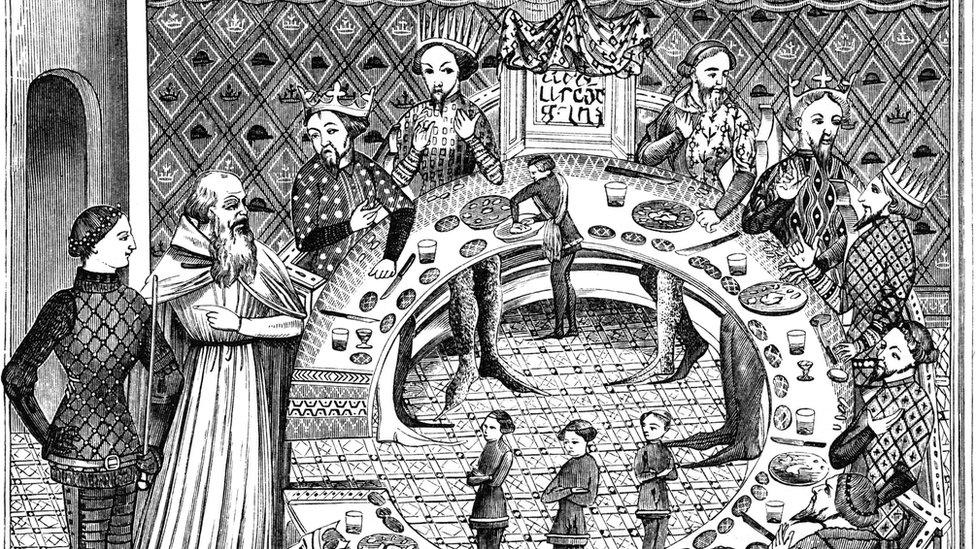Bone remains found in latest Arthur's Stone dig in Dorstone
- Published
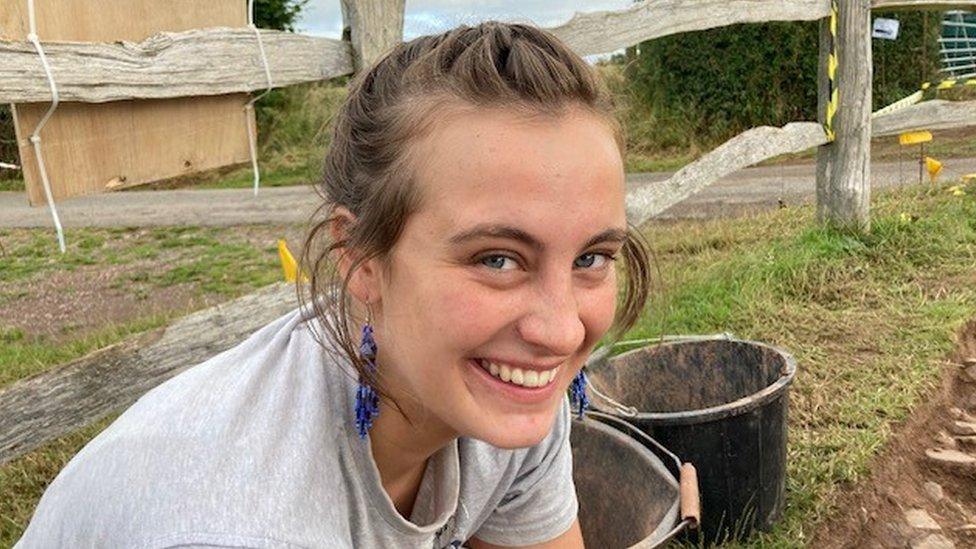
Mattie Hudson discovered the cremated remains of bones during the dig
Cremated remains of bones have been found by archaeologists at an ancient stone formation with connections to King Arthur.
Arthur's Stone in Dorstone, Herefordshire, is said to mark the spot where the monarch slew a giant.
Students at the universities of Manchester and Cardiff have been excavating the site.
The discovery of the remains in the latest dig were "super exciting", Dr Nick Overton said.
They will be sent to a specialist, but he said people in the Neolithic period and Bronze Age were known to have cremated their dead alongside burials and the use of tombs.
"These may be the remains of human bodies which have been incorporated into these features," Dr Overton said.
"It shows that people keep coming back to the same places and these monuments keep being important parts of people's lives and people's landscapes."
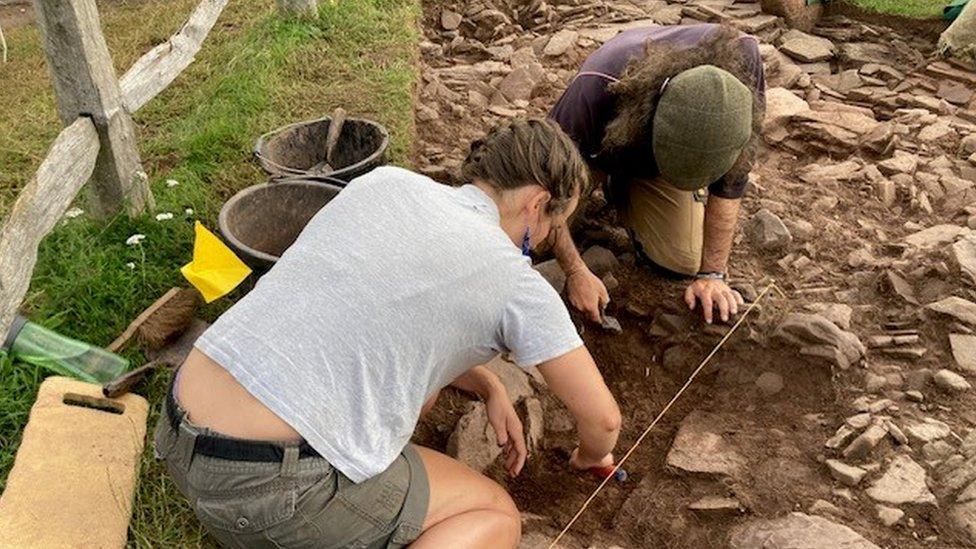
Archaeologists are trying to get a better understanding of Arthur's Stone in Dorstone
The stone slabs of Arthur's Stone is more than 5,000 years old but archaeologists have previously said its history is poorly understood.
It is also said to be the inspiration for Aslan's stone table in C.S. Lewis' work The Lion, The Witch, and The Wardrobe.
Students returned for a third year, following permission from English Heritage, as part of efforts to better understand the area's history.
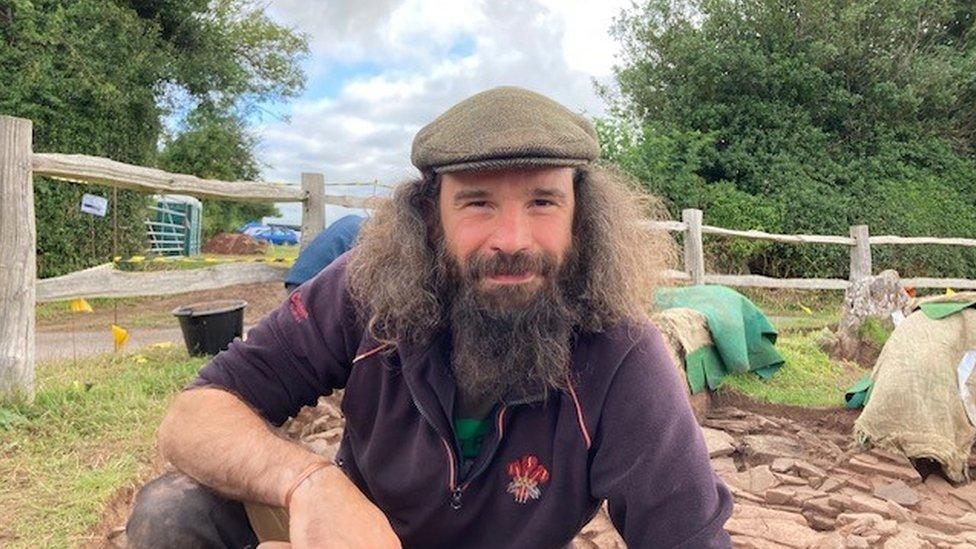
Dr Nick Overton said the discovery of the remains was "super exciting"
Second-year student Mattie Hudson found the bone remains in a cist - a small stone box, used to hold the bodies of the dead.
"You get quite used to just finding sandstone so when the white [of bone] comes up in the soil you can see it quite well," she said.
The discovery at the start of this year's dig was "exactly what we need to start unpicking this monument", Dr Overton said.
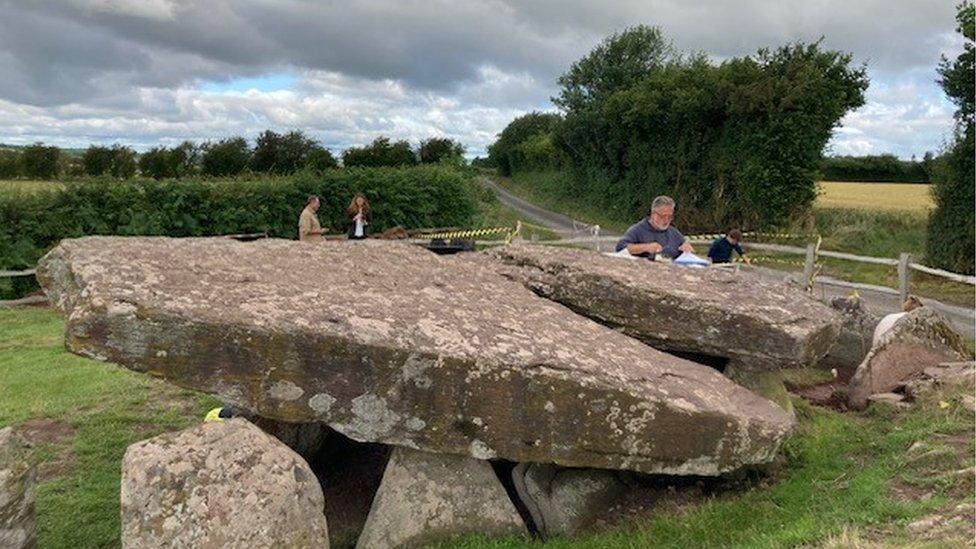
Arthur's Stone is said to mark the spot where King Arthur slew a giant

Follow BBC West Midlands on Facebook, external, Twitter, external and Instagram, external. Send your story ideas to: newsonline.westmidlands@bbc.co.uk, external
Related topics
- Published18 July 2022
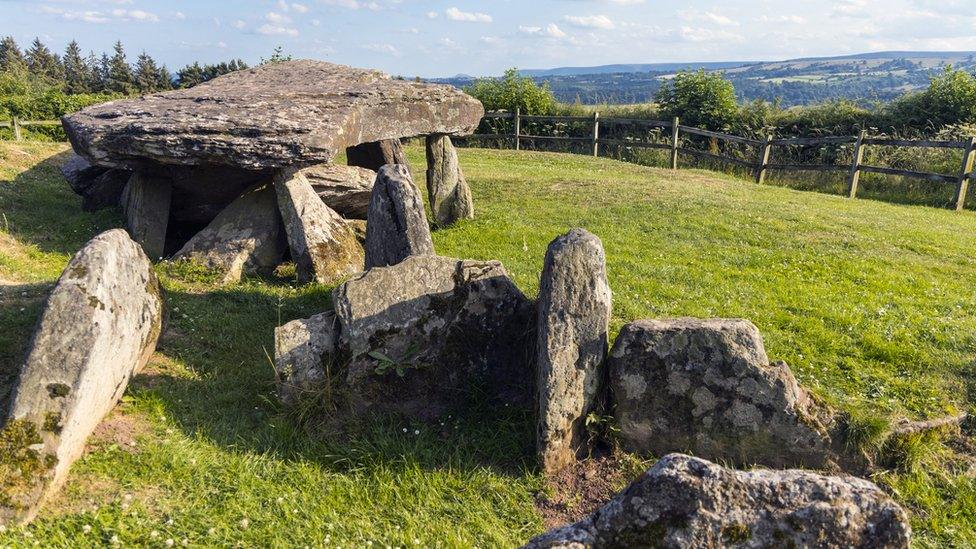
- Published15 July 2022
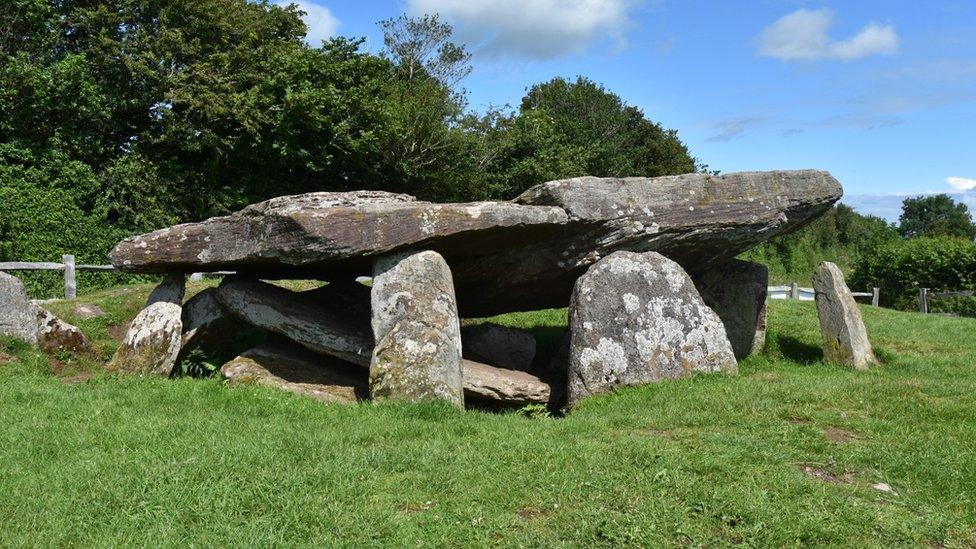
- Published30 July 2017

- Published18 December 2016
